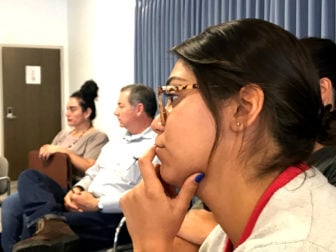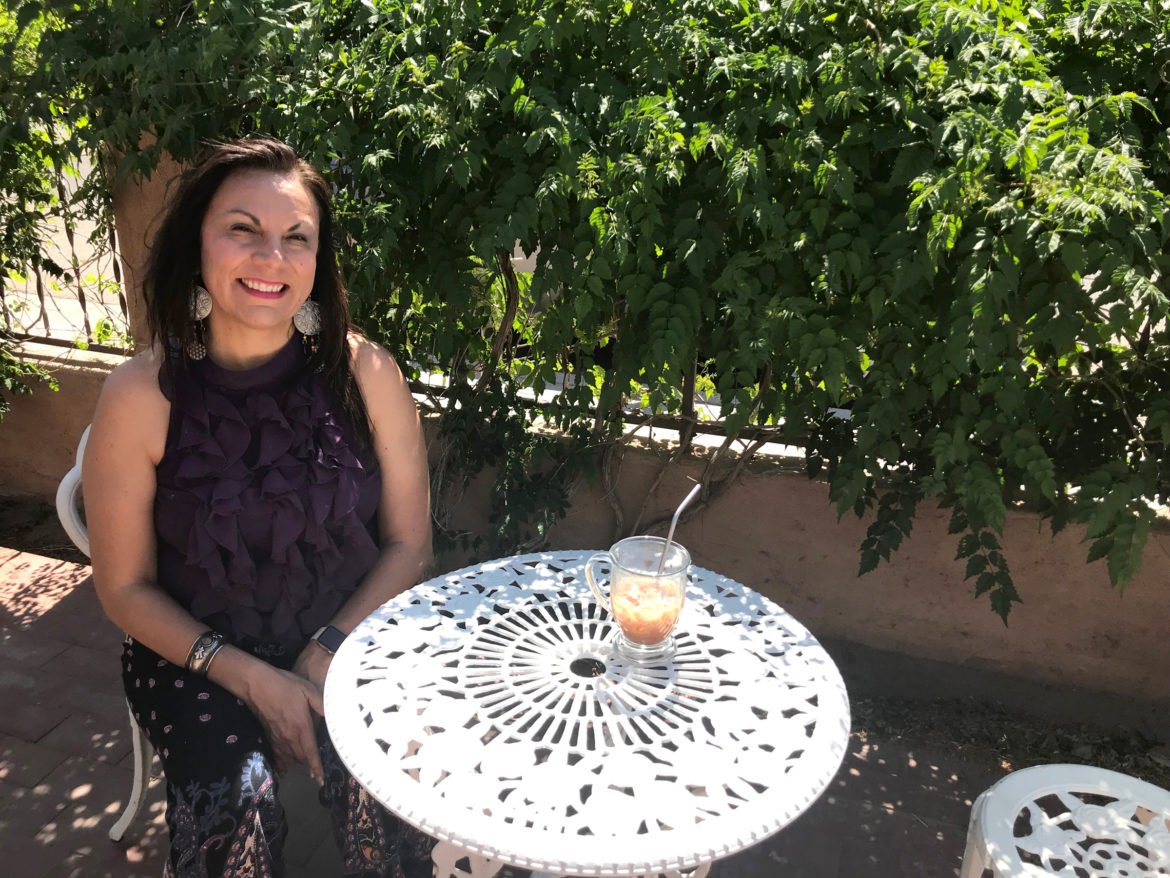Las Cruces City Councilor Kasandra Gandara has one big request for her partners in a new effort to tackle childhood trauma in Las Cruces and Doña Ana County: Ask every person they serve or interact with how many Adverse Childhood Experiences they’ve had.
Gandara and a group of behavioral health providers, educators, community activists and health professionals hope to use that data to create a systemic approach to reducing childhood trauma, with the aim of combating child abuse in the community and improving children’s health, education and lives.
Gandara was inspired for the project by the book “Anna, Age Eight: The Data-Driven Prevention of Childhood Trauma and Maltreatment,” which was based on the work of Katherine Ortega Courtney and Dominic Cappello at the New Mexico Children Youth and Families Department’s Protective Service Division.
It chronicles the life and death of a child at her mother’s hands, while making the case that the smart use of data and community involvement can prevent childhood trauma.
Gandara, who ended a 28 year social-work career as a CYFD county office manager, wants to use the solutions outlined in the book as a framework for Las Cruces to move awareness of ACEs beyond child advocates and emergency responders and into the general public so that they can help their community and families heal. The ultimate goal for the working group is to bring together a fractured child welfare system and change their practices to better serve kids.
The CDC-Kaiser ACE Study done in the late 1990s found a direct link between the number of Adverse Childhood Experiences, or ACEs, a person had and the subsequent quality of their health and life. People with multiple ACEs were at higher risk for substance abuse, poor health and early death, depression and suicide, unplanned pregnancies and poor work performance.
“What’s telling to me about the (1990s) ACEs study is that it’s all of us. People that have education, middle class, not just our impoverished communities,” Gandara said. “I feel like we’re wasting time and we should do something about this now.”
A recent report showed that nearly one in five New Mexico children have had multiple adverse childhood experiences. ACEs include things like having a parent in prison or who are substance abusers, having a parent with mental illness, being the victim of rape or child abuse, or witnessing domestic violence.
See “The ACE Questionnaire”
Answer the following questions in Adverse Childhood Experience (ACE) Questionnaire and add 1 point for each yes answer to determine your ACE score.
While you were growing up, during your first 18 years of life:
1. Did a parent or other adult in the household often … Swear at you, insult you, put you down, or humiliate you? Act in a way that made you afraid that you might be physically hurt?
2. Did a parent or other adult in the household often … Push, grab, slap, or throw something at you? Ever hit you so hard that you had marks or were injured?
3. Did an adult or person at least 5 years older than you ever… Touch or fondle you or have you touch their body in a sexual way, or try to or actually have oral, anal, or vaginal sex with you?
4. Did you often feel that … No one in your family loved you or thought you were important or special? Feel your family didn’t look out for each other, feel close to each other, or support each other?
5. Did you often feel that … You didn’t have enough to eat, had to wear dirty clothes, and had no one to protect you? Or, your parents were too drunk or high to take care of you or take you to the doctor if you needed it?
6. Were your parents ever separated or divorced?
7. Was your mother or stepmother: Often pushed, grabbed, slapped, or had something thrown at her? Sometimes or often kicked, bitten, hit with a fist, or hit with something hard? Ever repeatedly hit over at least a few minutes or threatened with a gun or knife?
8. Did you live with anyone who was a problem drinker or alcoholic or who used street drugs?
9. Was a household member depressed or mentally ill or did a household member attempt suicide?
10. Did a household member go to prison?
Now add up your “Yes” answers. You can learn more about ACE effects at the CDC website.
On Friday, Gandara brought together a cross section of leaders to form the nucleus of a community effort that uses data to create a systemic approach to reducing the prevalence of ACEs in Dona Ana County. It follows an initial convening in late April of more than 30 community leaders to lay out priorities for a childhood trauma coalition. That group settled on a focus on behavioral health, which was hurt in the county and much of New Mexico after a shakeup of mental health and substance abuse treatment providers across the state for Medicaid fraud that was ultimately dismissed by the Attorney General’s Office.
Group seeks data informed change
Gandara says while there is some data from CYFD about conditions in their communities, more granular data at the local level would be helpful.
“I don’t understand why we still have 2,800, almost 3,000 reports (to CYFD of abuse and neglect cases in the county),” she said. “We used to have almost 200 children in care. We have, probably, one of the counties that has the most deaths of children due to child abuse and neglect. We shouldn’t have it. We just shouldn’t have it.”
Part of the effort would be to gather information on children’s, parents’ and even grandparents’ exposure to ACEs with a questionnaire widely used in the child welfare field, then using that information to change how services are delivered or how schools or agencies interact with children. As an example, school nurses who collect health histories of all children in the Las Cruces Public Schools could add the ACEs survey, and it could determine hot spots of childhood trauma at the district.
Brian Kavanaugh, CEO of Families and Youth Inc., has signed on to be one of the backbone organizations of the effort. Other participants included LCPS, local legislators and politicians, the local office of the state Department of Health, the Paso Del Norte Foundation and faith-based community organizer NM CAFé.
Kavanaugh said he thinks there are three levels to the problems of childhood trauma in the community: Awareness, understanding and what to do about it. As a mental health professional he said he still hears a lot from people that adversity is good for kids, that it makes them stronger. He is still fighting that misperception.
“There are incidents that happen — abuse, neglect, that type of stuff — and I think there is a broader awareness that it exists in our community, but then an understanding of why does it exist and how does it impact people, I think that is fairly absent. And then the third one, what to do about it. Which is, like, almost nonexistent.”
“What to do about it” is the driving force for the group.

Sylvia Ulloa/New Mexico In Depth
Johana Bencomo, director of community organizing for NM CAFe, attends the first convening of a working group on childhood trauma in Las Cruces in late April.
Johana Bencomo, director of community organizing at NM CAFé, said she started her career as a social worker dealing with kids in the Hatch schools with behavioral issues and suicidal thoughts, and felt frustration that she was dealing with the symptoms and not the underlying causes — the single mom working two jobs, a deported parent and “levels and levels of trauma.”
“Let’s say you gather all this data, and then what?,” she asked “How are we gonna actually go about trying to dismantle some of these things that keep happening? That’s what brings me to the table, when we start talking about how do we actually start impacting the problem.”
Kavanaugh said he also wants to see tangible results, and finds promise in the hub. “We’re at a point where we have the framework set up, and now we need to put some action items to it and start following through. And I know we’re committed to doing that. With or without funding — although funding would be nice — there’s steps we can start taking.”

The Truth About ACEs Infographic by RWJF on RWJF.org
